Air-polishing devices
(APDs)
Air-polishing devices have long history of use in dentistry, however recent advancements provided them a leading role in modern prophylaxis.
The underlying principle behind APDs is to produce a stream of small particles, mixed with pressurised air and a jet of water, forming an abrasive ‘slurry’ that is capable to remove biofilm as well as stains.
Therefore, the indication for use of air polishing devices has been expanded today from supragingival, utilising highly abrasive sodium bicarbonate powders, to subgingival applications. With the development of new degradable and less abrasive powders in combination with newly designed subgingival application devices, access to and cleaning of deeper pockets and interdental areas is now achievable.
Two newly introduced powders, glycine and erythritol have been tested in clinical studies, and have shown to be safely used in subgingival areas. Subgingival powders used in combination with a standard handpiece, commonly used for supragingival biofilm and stain removal, can reach a subgingival penetration depth of up to 4mm when directed into the orifice of periodontal pocket.
More recently, a new subgingival application device ‘the nozzle’, has been developed to treat deeper periodontal pockets, PD> 5mm.
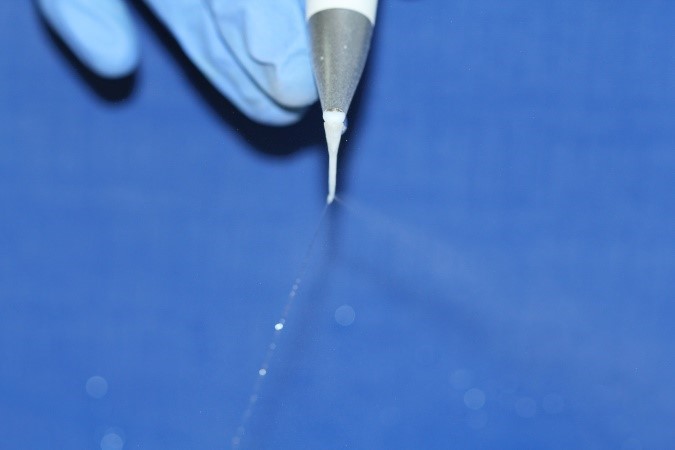
The nozzle has two outlets located in average about 2mm above the tip of the nozzle, allowing the air-powder mixture to exit horizontally towards the root surface and pocket epithelium. The third outlet, located at the tip of the nozzle releases the water spray only and providing irrigation and removal of loose biofilm and debris.
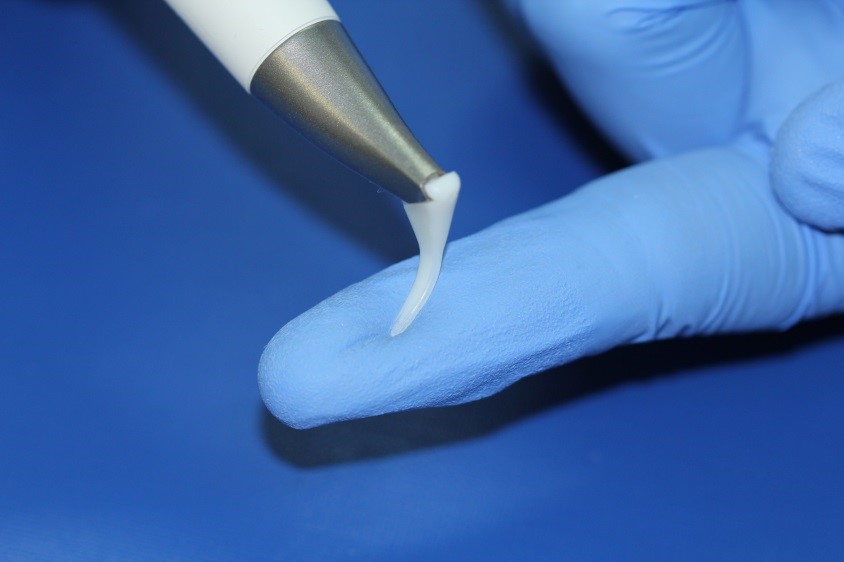
The nozzle is flexible, made of thermoplastic elastomer to facilitate easier penetration into the pocket and adjustment to the root surface. It reduces the jet-spray pressure to 1 bar allowing a gentle clean and reduction of potential adverse effects such as tissue irritation and emphysema.
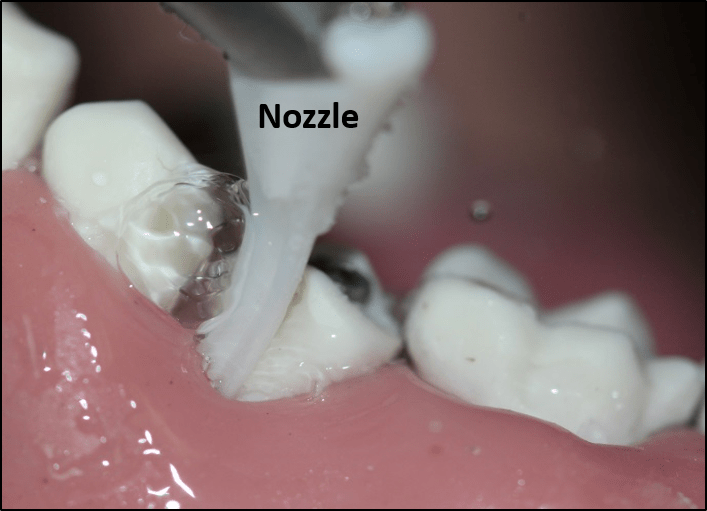
Ng E, Byun R, Spahr A, Divnic-Resnik T. The efficacy of air polishing devices in supportive periodontal therapy: A systematic review and meta-analysis. Quintessence Int. 2018;49(6):453–467. doi:10.3290/j.qi.a40341
Supragingival air-flow technique with Airflow® standard handpiece
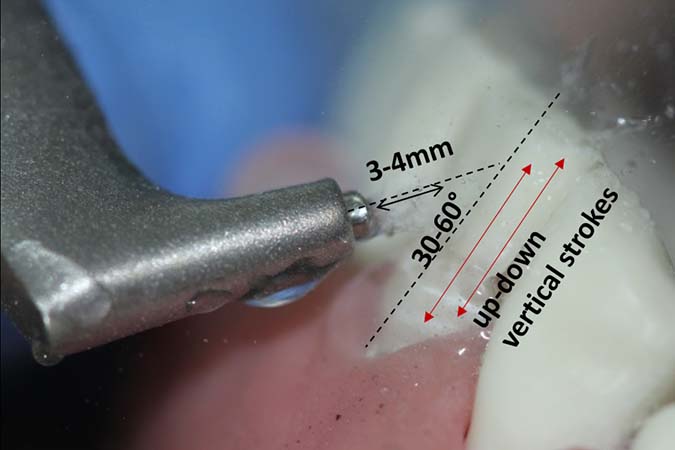
Anterior teeth
the handpiece tip should be positioned at 30-60-degree angle to the labial/oral surface of the anterior teeth at 3-4mm distance from the surface.
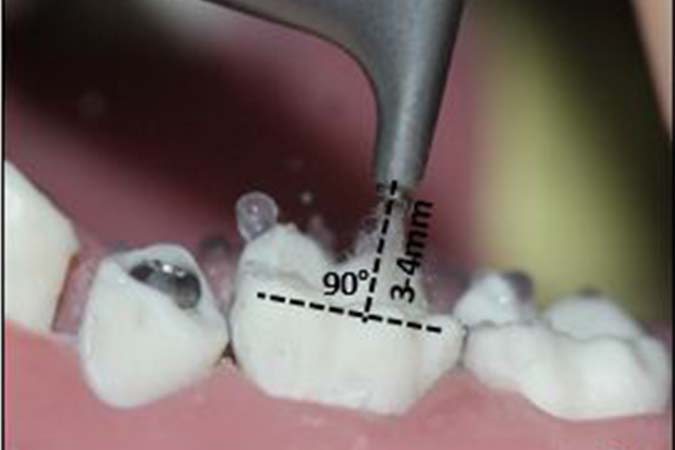
Posterior teeth
the handpiece tip should be positioned at 80-degree angle to the buccal/oral surface and at 90-degree angle to the occlusal surface of the posterior teeth. The tip should be held 3-4mm from the surface.
Activate the device by pressing the foot pedal. Use constant up and down vertical motions on buccal/lingual or horizontal motions on the occlusal surface, going from interproximal to interproximal surface of the tooth. While cleaning buccal/lingual surface keep the tip away from the gingival margin.
Supragingival air-flow technique with standard hand-piece – Video
Supragingival air-flow technique with Airflow® standard handpiece for PD≤4mm
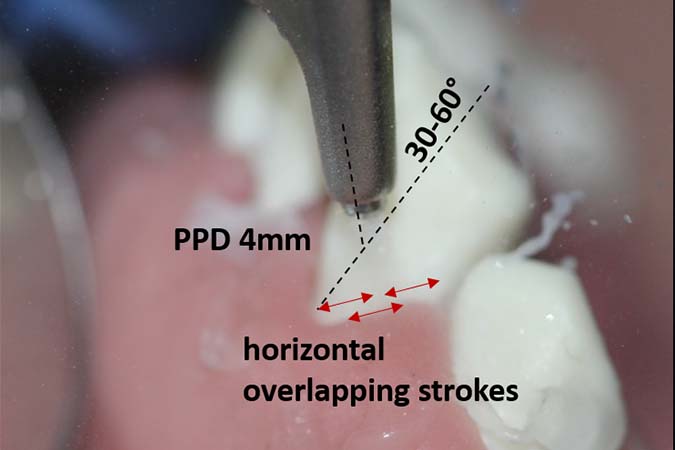
Aim the tip of the standard handpiece to the sulcus/pocket orifice at 30-60- degree angle and at distance 3-4mm from the tooth surface. Activate the device by pressing the foot pedal. Use constant sweeping horizontal motions, going from interproximal to interproximal surface of the tooth.
Subgingival air-flow technique with standard hand-piece – Video
Subgingival air-flow technique with Perioflow® handpiece and ‘the nozzle’ for PD ≥5mm
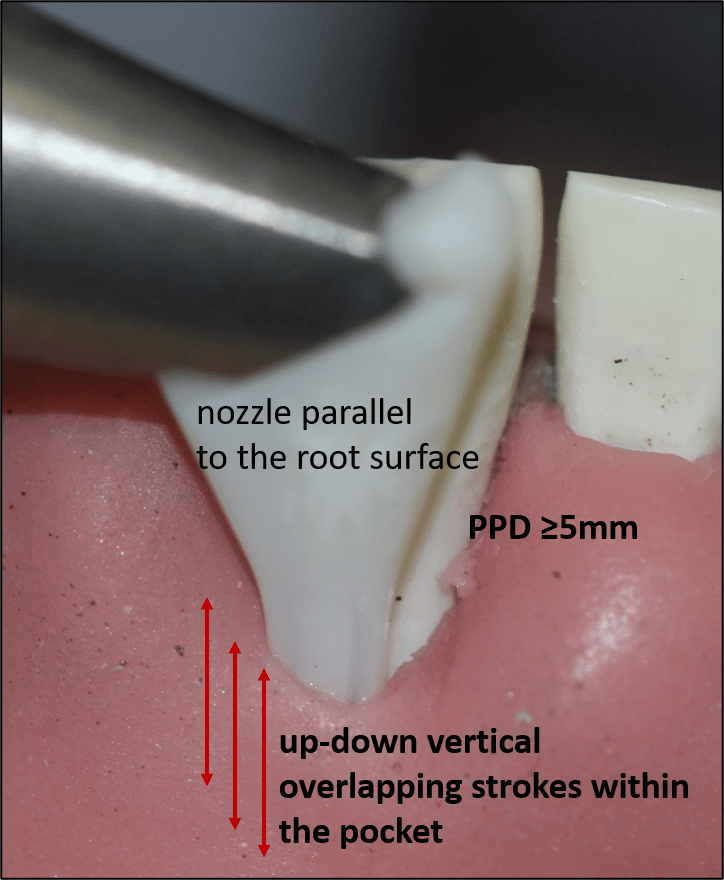
Insert the nozzle parallel to the tooth/root surface reaching the bottom of the pocket, pull 1 mm away. Activate the device by pressing the foot pedal. Use a constant vertical motion ‘like probing’ not more than 5 sec per surface. Prior to start, check the patency of the nozzle. Never force the nozzle into the periodontal pocket.
Subgingival nozzle application for PPD 5mm and more – Video